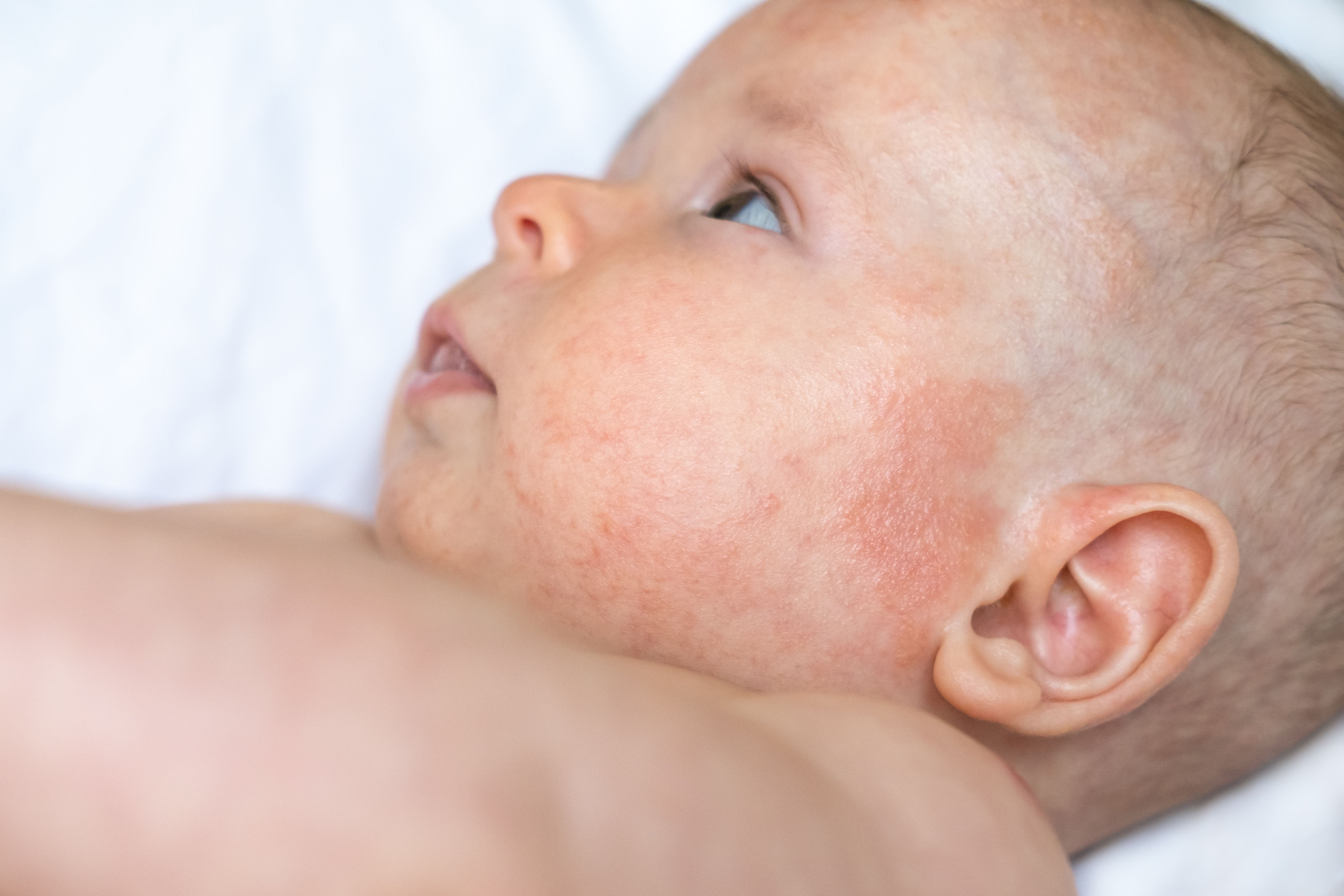- Case-Based Roundtable
- General Dermatology
- Eczema
- Chronic Hand Eczema
- Alopecia
- Aesthetics
- Vitiligo
- COVID-19
- Actinic Keratosis
- Precision Medicine and Biologics
- Rare Disease
- Wound Care
- Rosacea
- Psoriasis
- Psoriatic Arthritis
- Atopic Dermatitis
- Melasma
- NP and PA
- Skin Cancer
- Hidradenitis Suppurativa
- Drug Watch
- Pigmentary Disorders
- Acne
- Pediatric Dermatology
- Practice Management
- Prurigo Nodularis
- Buy-and-Bill
News
Article
Prenatal Exposure to Opioids Linked to Increased Odds of Eczema and Dermatitis
Author(s):
In a recent study, prenatal opioid exposure was also linked to increased odds of infections and asthma, but not with allergies, anaphylaxis, orautoimmune conditions.
Prenatal opioid exposure is linked to increased odds of eczema, dermatitis, infections, and asthma, according to a study1 published in JAMA Network Open. Exposure was not linked, however, to allergies, anaphylaxis, or autoimmune conditions.
In this study, researchers Kelty et al sought to compare the risk of hospitalization with presentation to emergency departments for children with and without prenatal opioid exposure. Presentation was limited to immune-related conditions, as researchers noted that prenatal exposure to opioids may alter fetal immune system development.2
In addition to exploring the risk of immune-mediated diseases associated with exposure, researchers also sought to associated between exposure and disease based on several factors, including timing of exposure, indication for opioid dispensing, and presence of neonatal abstinence syndrome.
The retrospective cohort study was conducted using data from from state hospitals, emergency departments, and mortality records, of children born in Western Australia between January 1, 2003, and December 31, 2018.
Of 401,462 children whose data was included in the study, 1,656 had prenatal opioid exposure.
Researchers found that children with prenatal exposure were more likely to be born preterm (18.7%) than children without exposure (8.4%).
Seventy point eight percent of children with prenatal exposure were exposed during the first trimester. Seventy-three point seven percent of children with exposure were exposed during the second trimester and 76.4% during the third trimester. Neonatal abstinence syndrome was present in 40.2% of children with exposure.
Additionally, 41.0% of children with prenatal opioid were exposed as a result of opioid use for the treatment of pain, and 60.8% were exposed as a result of opioid use disorder.
Perinatal opioid exposure was ultimately associated with an increased risk of perinatal infection, including sepsis, candidiasis, conjunctivitis, and urinary tract infections.
The adjusted odds ratio for developing perinatal infections was 2.91 times greater in neonates with opioid exposure and a diagnosis of neonatal abstinence syndrome than in nonexposed neonates.
Regarding dermatologic implications, researchers observed associations between prenatal exposure and perinatal eczema and dermatitis by trimester. Both prenatal opioid exposure and neonatal abstinence syndrome were associated with increased risks of diaper dermatitis and erythema intertrigo. Furthermore, neonatal abstinence syndrome was deemed a significant driver of perinatal eczema and dermatitis in exposed neonates.
Prenatal opioid exposure was not, however, associated with an increased risk of autoimmune conditions, allergies, or anaphylaxis.
Potential study limitations included the study's design to only include Schedule 8 opioids and the ability of researchers to only identify the diagnosis of a child in a hospital or emergency department setting.
"Beyond the perinatal period, [prenatal opioid exposure] was associated with a modest 35% increase in the odds of being diagnosed with eczema and dermatitis (compared with a >11-fold increase in the perinatal period)," wrote Kelty et al. "The findings suggest that [prenatal opioid exposure] may modify the developing immune system, changing how the immune system responds to subsequent conditions."
References
- Kelty E, Rae K, Jantzie LL. Prenatal opioid exposure and immune-related conditions in children. JAMA Netw Open. 2024;7(1):e2351933. doi:10.1001/jamanetworkopen.2023.51933
- Yen E, Davis JM. The immediate and long-term effects of prenatal opioid exposure. Front Pediatr. 2022;10:1039055. doi:10.3389/fped.2022.1039055







